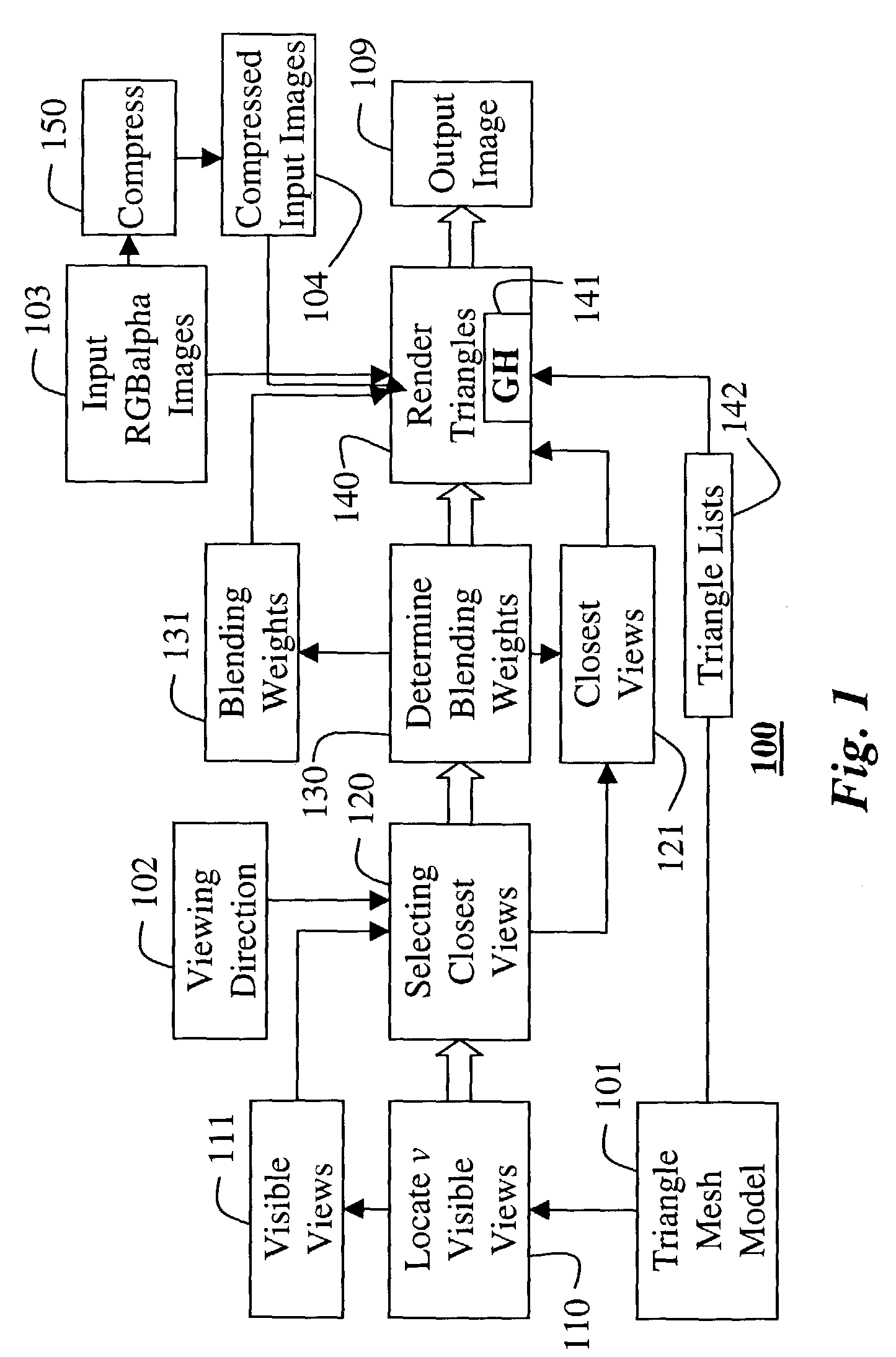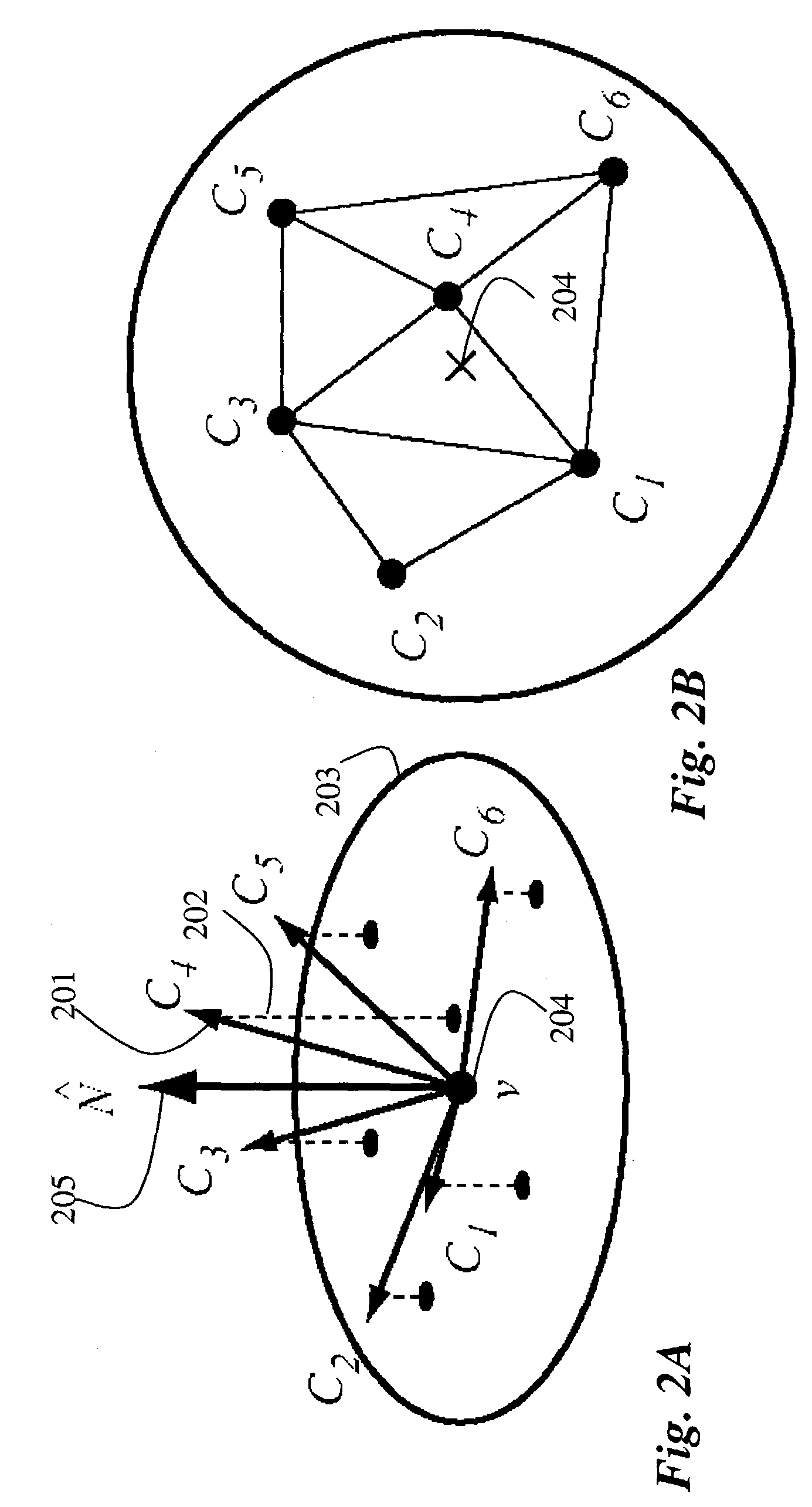System and method for interactively rendering objects with surface light fields and view-dependent opacity
a technology of surface light field and view-dependent opacity, applied in the field of rendering threedimensional objects, can solve the problems of reducing rendering performance, unable to render such objects from parametric or geometric models such as polygon meshes, and limited surface light field approaches due to the complexity of the object's geometry
- Summary
- Abstract
- Description
- Claims
- Application Information
AI Technical Summary
Benefits of technology
Problems solved by technology
Method used
Image
Examples
Embodiment Construction
System and Method Overview
[0022]FIG. 1 shows a system and method 100 according to the invention. The system and method 100 interactively render surface light fields with view-dependent opacity light fields. The rendering can generate an output image 109 from a model of a complex textured object for arbitrary viewing directions.
[0023]The input to the system 100 includes a triangular mesh 101, a viewing direction 102, and an input set of rectified RGBα images 103. The mesh 101 defines a surface shape or model of the object. Any known method for generating a polygon mesh model for an object can be used. The direction d 102 indicates a point of view for the output image 109, The input images 103 are acquired of the object by cameras at a fixed number of camera locations. The images can be digitized color photographs, or images acquired with a digital camera.
[0024]The method 100 includes the following steps. For each vertex v in the mesh 101, locate 110 a set of visible views 111. A vert...
PUM
 Login to View More
Login to View More Abstract
Description
Claims
Application Information
 Login to View More
Login to View More - R&D
- Intellectual Property
- Life Sciences
- Materials
- Tech Scout
- Unparalleled Data Quality
- Higher Quality Content
- 60% Fewer Hallucinations
Browse by: Latest US Patents, China's latest patents, Technical Efficacy Thesaurus, Application Domain, Technology Topic, Popular Technical Reports.
© 2025 PatSnap. All rights reserved.Legal|Privacy policy|Modern Slavery Act Transparency Statement|Sitemap|About US| Contact US: help@patsnap.com



